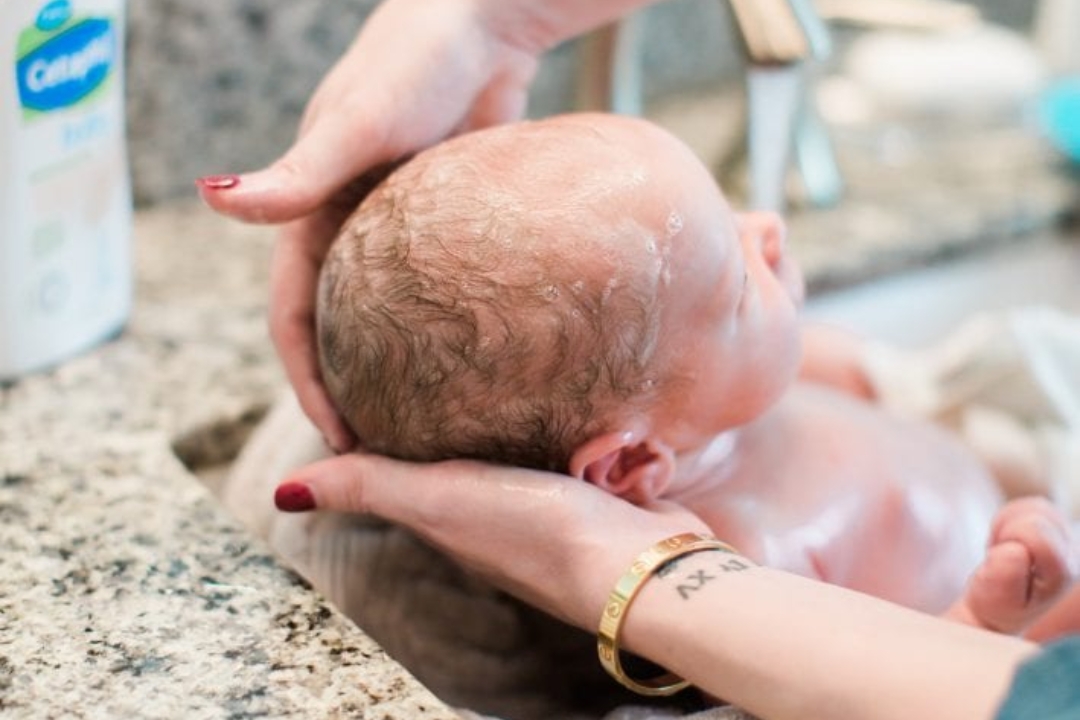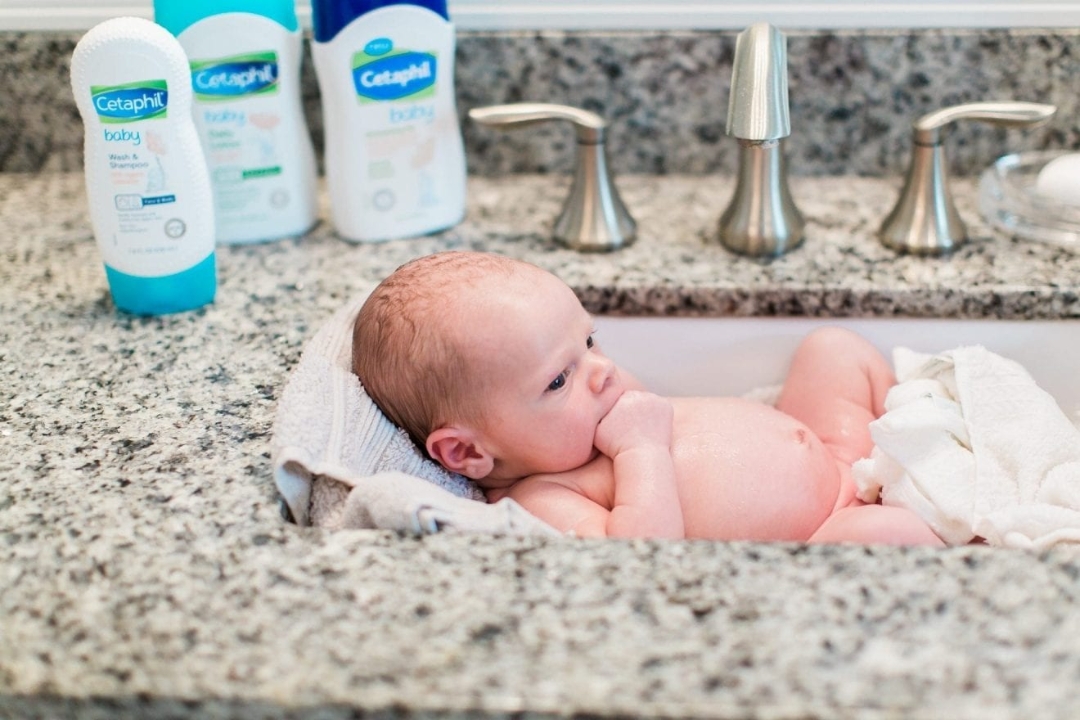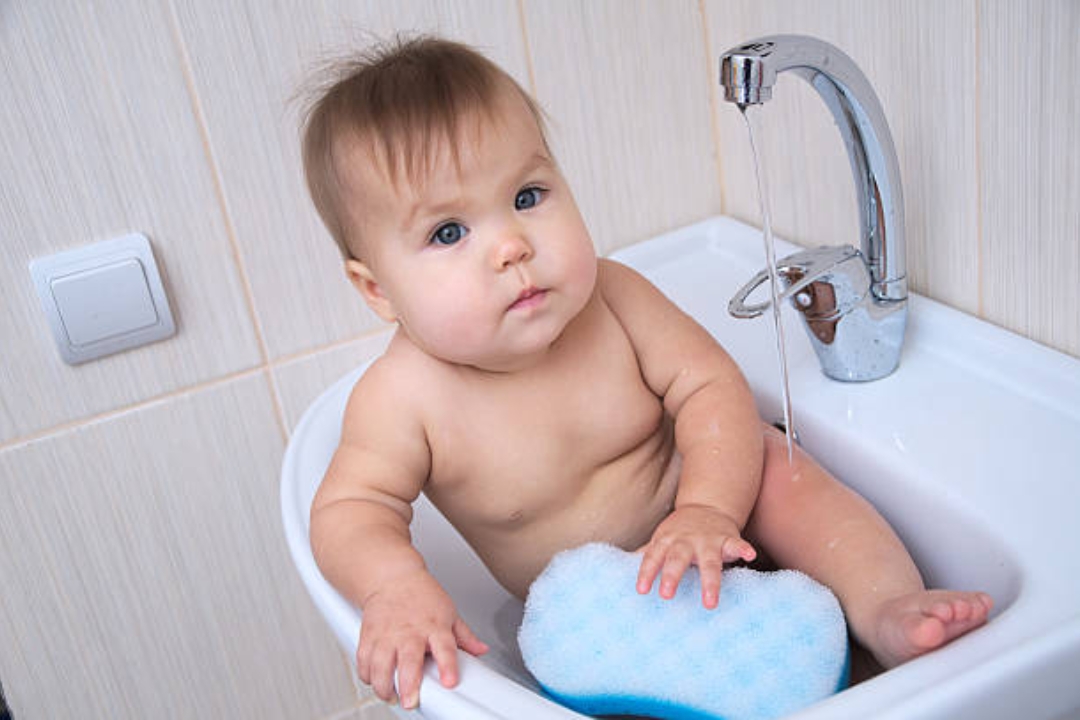Table of Contents
Can you bathe the baby in the laundry sink?

Can you bathe the baby in the laundry sink? If you’re a new parent, the laundry sink might seem like a logical place to bathe your baby. After all, it’s big, it’s deep and it has a built-in faucet. But is it really safe to bathe your baby in the laundry sink?
The answer is yes, you can. In fact, it’s often recommended by experienced parents and pediatricians alike. One pro of bathing your baby in the sink is that it can be more comfortable for you. You won’t have to bend over the edge of a bathtub or worry about slipping in the shower.
The sink is typically shallower than a bathtub, making it easier to keep your little one safe and comfortable. Plus, the hard surface of the sink means there’s no risk of slipping or falling. In addition, It’s also big enough for the baby to fit in and it is easy to fill up with warm water. You can put a towel down in the sink so the baby does not slip and you can control the water temperature easily.
Bathing your baby in the laundry sink is a good option if you do not have a bathtub. It can be a convenient way to get the job done, but it’s not without its risks. Make sure you take precautions to ensure your baby’s safety and never leave them unattended while they’re in the sink.
Here’s what you need to know before you try bathing your baby in the laundry sink.
First of all, make sure that the laundry sink is clean and free of any detergent residue. You might want to give it a good scrub first before using it to bathe your baby. You don’t want your baby to be exposed to any harmful chemicals. You’ll also want to put a towel down in the sink to prevent your baby from slipping.
Secondly, the laundry sink might be too deep for your newborn. If you’re not careful, your baby could slip under the water and drown. So, it’s important to use caution when bathing your newborn in the laundry sink.
If you decide to bathe your baby in the laundry sink, make sure to use a small amount of water and test the temperature before putting your baby in. It is also important to keep your baby safe by never leaving them unattended. Also, always support your baby’s head and neck while bathing them. Finally, be careful not to get water in their face or eyes.
Ultimately it’s up to you and what makes you feel comfortable. If you follow these simple tips, bathing your baby in the laundry sink can be a safe and easy way to get them clean.
How do I bathe my 1 month old in the sink?
 Babies need to be bathed every day, but some parents find it challenging to do so with a newborn. Especially when you’re short on space, and assuming you don’t have a baby bathtub. There’s no need to worry. One way to bathe your baby is to use the sink. It’s actually quite easy and only takes a few steps.
Babies need to be bathed every day, but some parents find it challenging to do so with a newborn. Especially when you’re short on space, and assuming you don’t have a baby bathtub. There’s no need to worry. One way to bathe your baby is to use the sink. It’s actually quite easy and only takes a few steps.
Here are some tips on how to bathe your 1 month old in the sink:
First thing you need to do before you try bathing your baby in the laundry sink is to make sure that the sink is clean. Place the things you need on the counter next to the sink so it’s within reach.
Here’s what you’ll need:
- A clean sink or basin
- A towel
- A gentle, fragrance-free baby shampoo
- A soft washcloth
- Warm water
To start, Place a soft towel or mat on the bottom of the sink to prevent your baby from slipping. Then fill it with a few inches of warm water that is just warm enough to touch. You’ll want the water to be deep enough to cover your baby’s chest and tummy when they’re seated in the sink. Test the water temperature with your hand before placing your baby in the sink. Make sure it is not too hot or cold.
Next, undress your baby and gently lower him or her into the water. Support the head and the back as you lower them in. When the baby is already in the sink, Use one hand to support the neck. While you use the other hand to hold a small cup or pitcher, to pour the water slowly over her body and head.
It’s important to start slowly when introducing your infant to water. Get them used to the sensation of being wet by gently pouring water over their head and body.
Wash her with a gentle, fragrance-free soap. Use a washcloth or sponge to clean your baby’s body. Gently massage her scalp with your fingers to loosen any dirt or dried milk. Then rinse her head with clean water. Be sure to avoid getting soap in her eyes, nose, and mouth. They may cry at first, but that’s normal. Just keep reassuring them that everything is okay.
Pay special attention to any folds of skin, such as the groin area, underarms, and behind the knees. These areas can trap sweat and bacteria and may need extra cleansing. Be sure to wash all of their body, including behind their ears, under their chin, and in between their toes. You can use a washcloth or your hands to help you.
Rinse your baby off with clean, warm water. Be sure to rinse all the soap off your baby’s skin. And finally after you’re done washing them, lift them out of the sink and wrap them in a soft towel and cuddle them close to you until they are dry.
With these simple tips, you can give your 1 month old a safe and comfortable bath in the sink.
Why do Americans wash babies in the kitchen sink?
 A popular method of bathing newborns in the United States is to wash them in the kitchen sink. There are several reasons why this method is used.
A popular method of bathing newborns in the United States is to wash them in the kitchen sink. There are several reasons why this method is used.
- First, it allows parents to have all the supplies they need close at hand.
- Second, the kitchen sink is usually larger than a bathroom sink, making it easier to bathe a baby in it.
- The kitchen sink is also usually closer to the diaper changing station, making it more convenient to wash a baby after a diaper change.
- The water heater is typically located in the kitchen, so the water can be turned up or down as needed. This is important because newborns have very sensitive skin and need to be washed in warm, not hot, water.
- Additionally, many kitchens have a sprayer attachment on the faucet, which can be used to rinse off a baby after they have been washed.
- Finally, many American homes do not have a bathtub, which would be the preferred method of bathing a baby in other countries.
When should you stop bathing your baby in a sink?
 For most people, the answer is very simple: it’s when the baby can no longer fit in the sink.
For most people, the answer is very simple: it’s when the baby can no longer fit in the sink.
Most parents start bathing their babies in a sink when they are first born. Because it is easier to control the environment and keep the baby warm in a sink than in a bathtub. However, there are some things to consider when deciding when to make the switch from sink to tub.
Generally speaking, you can continue to bathe your baby in a sink until he or she is about six months old. At this point, you’ll find that your baby will likely be too big to fit comfortably in the sink anymore.
Because your baby is growing, your baby will start moving around more. As your baby starts becoming more mobile, they’ll also start moving around more when they’re in the sink. This can make it difficult to keep them still long enough to get them clean.
A newborn can easily fit in a sink, but as they grow, it becomes more difficult. You also have to be very careful not to splash water which can create a mess in your kitchen or drop your baby while transferring them in and out of the sink.
Can I bring my newborn in the bathroom while I shower?
As a new parent, you may be wondering if it’s safe to bring your newborn in the bathroom while you shower. While it’s not recommended to leave your baby unattended, there are ways to make it work if you need to take a shower.
Here are a few things to keep in mind if you’re considering taking your baby into the bathroom with you:
- Make sure the bathroom is well-ventilated. You don’t want your baby breathing in any steam from the shower.
- Keep an eye on your baby at all times. If you need to step away from the shower, take your baby with you.
- Use a bath seat or infant carrier to keep your baby safe and secure while you shower. This way, you can have both hands free to wash yourself.
While these ways may be convenient, it can also be too risky
Bringing your newborn into the bathroom while you shower may seem like a convenient way to get things done, but it’s actually not a good idea. Here’s why:
- The steam from the shower can be harmful to your baby’s lungs. Inhaling too much steam can cause respiratory problems.
- The bathroom is full of bacteria that can be harmful to your baby. From the toilet to the sink, there are countless opportunities for your baby to come into contact with germs that could make him or her sick.
- A newborn baby’s immune system is not yet fully developed and they are at a higher risk for infection.
- There is a risk of slipping and falling. There is also the potential for scalding if the water is too hot.
You can minimize the risks by making sure that the bathroom is clean and taking precautions such as using a non-slip mat in the shower and ensuring that the water temperature is not too hot. It is also important to never leave your baby unattended in the bathroom.
How many days can a baby go without a bath?
A baby’s skin is delicate and needs to be cleaned daily to prevent rashes and other skin problems. But how often should a baby be bathed, and how many days can a baby go without a bath?
The answer may depend on your child’s age, health, and activity level. Newborn babies are generally recommended to be bathed every day or two. But after the umbilical cord stump falls off and the navel heals, you can start bathing your baby three times a week.
However, there are some exceptions to this rule. If your baby is particularly dirty or has a rash, you may need to increase the frequency of baths to keep up with the dirt and grime they’re sure to get into. And if your baby has eczema, you should consult with a doctor before changing the bathing schedule.
So how often should you bathe your baby? The answer may depend on your individual circumstances. A baby can go without a bath for a few days, as long as they are not dirty. However, if they are dirty, they will need to be cleaned as soon as possible. There are a few things to consider when deciding how often to bathe a baby. The weather, the baby’s activity level, and whether or not the baby has any skin conditions can all play a role in how often they need a bath.
However, most experts agree that it is best to stick to a daily bathing routine. This will help ensure that your baby stays clean and healthy.
